NASA's 1st flight to moon, Apollo 8, marks 50th anniversary
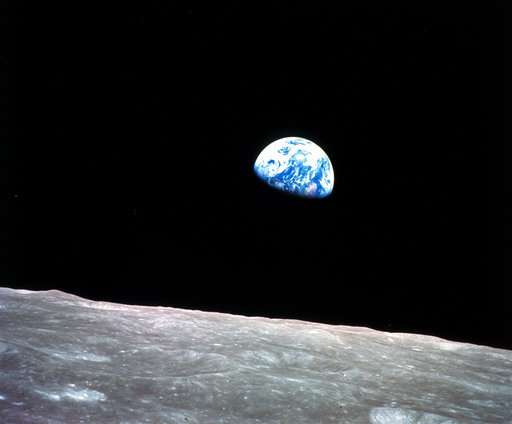
Fifty years ago on Christmas Eve, a tumultuous year of assassinations, riots and war drew to a close in heroic and hopeful fashion with the three Apollo 8 astronauts reading from the Book of Genesis on live TV as they orbited the moon.
To this day, that 1968 mission is considered to be NASA's boldest and perhaps most dangerous undertaking. That first voyage by humans to another world set the stage for the still grander Apollo 11 moon landing seven months later.
There was unprecedented and unfathomable risk to putting three men atop a monstrous new rocket for the first time and sending them all the way to the moon. The mission was whipped together in just four months in order to reach the moon by year's end, before the Soviet Union.
There was the Old Testament reading by commander Frank Borman, Jim Lovell and Bill Anders.
Lastly, there was the photo named "Earthrise," showing our blue and white ball—humanity's home—rising above the bleak, gray lunar landscape and 240,000 miles (386 million kilometers) in the distance.
Humans had never set eyes on the far side of the moon, or on our planet as a cosmic oasis, surrounded completely by the black void of space. A half-century later, only 24 U.S. astronauts who flew to the moon have witnessed these wondrous sights in person.
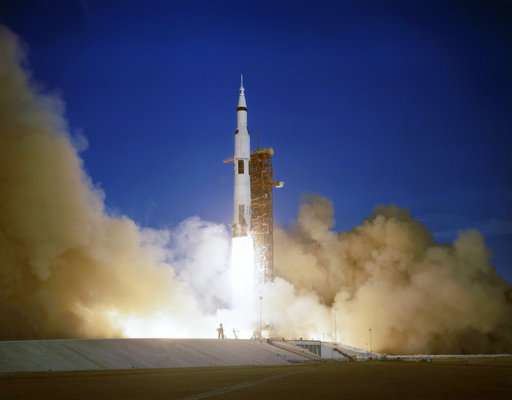
The Apollo 8 crew is still around: Borman and Lovell are 90, Anders is 85.
To Lovell, the journey had the thrill and romance of true exploration, and provided an uplifting cap for Americans to a painful, contentious year marked by the assassinations of Martin Luther King Jr. and Robert Kennedy, nationwide riots and protests of the Vietnam War.
The mission's impact was perhaps best summed up in a four-word telegram received by Borman. "Thanks, you saved 1968."
NASA Administrator Jim Bridenstine—who at age 43 missed Apollo—marvels over the gutsy decision in August that year to launch astronauts to the moon in four months' time. He's pushing for a return to the moon, but with real sustainability this next go-around.
The space agency flipped missions and decided that instead of orbiting Earth, Borman and his crew would fly to the moon to beat the Soviets and pave the way for the lunar landings to come. And that was despite on its previous test flight, the Saturn V rocket lost parts and engines failed.
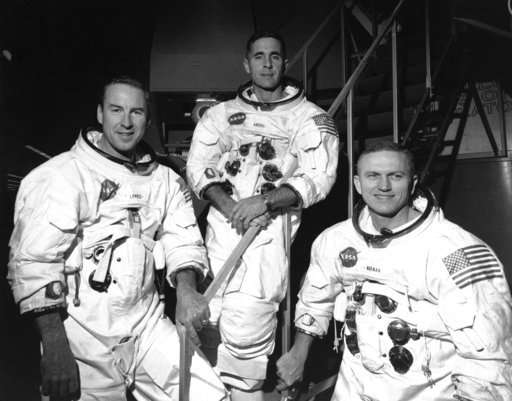
"Even more worrisome than all of this," Bridenstine noted earlier this month, Apollo 8 would be in orbit around the moon on Christmas Eve and Christmas Day. "In other words, if there was a failure here, it would wreck Christmas not only for everybody in the United States, but for everybody in the world."
As that first moon shot neared, Borman's wife, Susan, demanded to know the crew's chances. A NASA director answered: 50-50.
Borman wanted to get to the moon and get back fast. In his mind, a single lap around the moon would suffice. His bosses insisted on more.
"My main concern in this whole flight was to get there ahead of the Russians and get home. That was a significant achievement in my eyes," Borman explained at the Chicago launch of the book "Rocket Men" last spring.
Everyone eventually agreed: Ten orbits it would be.
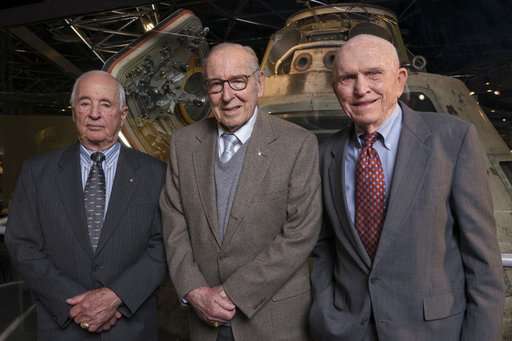
Liftoff of the Saturn V occurred on the morning of Saturday, Dec. 21, 1968.
On Christmas Eve, the spaceship successfully slipped into orbit around the moon. Before bedtime, the first envoys to another world took turns reading the first 10 verses from Genesis. It had been left to Borman, before the flight, to find "something appropriate" to say for what was expected to be the biggest broadcast audience to date.
"We all tried for quite a while to figure out something, and it all came up trite or foolish," Borman recalled. Finally, the wife of a friend of a friend came up with the idea of Genesis.
"In the beginning," Anders read, "God created the heaven and the Earth ..."
Borman ended the broadcast with, "And from the crew of Apollo 8, we close with good night, good luck, a Merry Christmas, and God bless all of you—all of you on the good Earth."
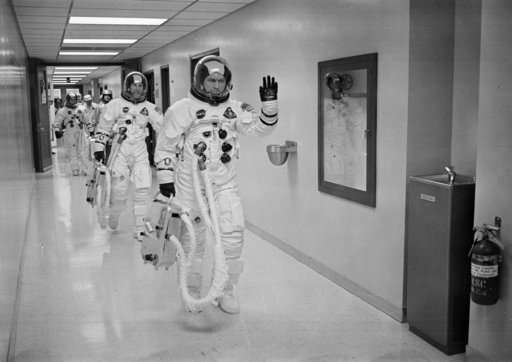
On Christmas morning, their spacecraft went around the moon for the final time. The engine firing needed to shoot them back to Earth occurred while the capsule was out of communication with Mission Control in Houston. Lovell broke the nervous silence as the ship reappeared: "Please be informed there is a Santa Claus."
Back in Houston, meanwhile, a limousine driver knocked on Marilyn Lovell's door and handed her a gift-wrapped mink stole with a card that read: "To Marilyn, Merry Christmas from the man in the moon." Lovell bought the coat for his wife and arranged its fancy delivery before liftoff.
Splashdown occurred in the pre-dawn darkness on Dec. 27, bringing the incredible six-day journey to a close. Time magazine named the three astronauts "Men of the Year."
It wasn't until after the astronauts were back that the significance of their Earth pictures sank in.
Anders snapped the iconic Earthrise photo during the crew's fourth orbit of the moon, frantically switching from black-and-white to color film to capture the planet's exquisite, fragile beauty.
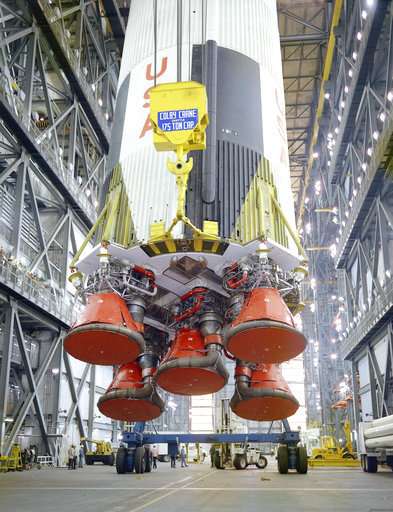
"Oh my God, look at that picture over there!" Anders said. "There's the Earth coming up. Wow, is that pretty!"
Before the flight, no one had thought about photographing Earth, according to Anders. The astronauts were under orders to get pictures for potential lunar landing sites while orbiting 70 miles (112 kilometers) above the moon.
"We came to explore the moon and what we discovered was the Earth," Anders is fond of saying.
His Earthrise photo is a pillar of today's environmental movement. It remains a legacy of Apollo and humanity's achievement, said professor emeritus John Logsdon of George Washington University's Space Policy Institute, forever underscoring the absence of political borders as seen from space.
Anders wondered then—and now—"This is not a very big place, why can't we get along?"

Lovell remains awestruck by the fact he could hide all of Earth behind his thumb.
"Over 3 billion people, mountains, oceans, deserts, everything I ever knew was behind my thumb," he recalled at a recent anniversary celebration at Washington's National Cathedral.
Astronaut-artist Nicole Stott said the golden anniversary provides an opportunity to reintroduce the world to Earthrise. She and three other former space travelers are holding a celebration at NASA's Kennedy Space Center on Friday, 50 years to the day Apollo 8 launched.
"That one image, I think, it just gives us the who and where we are in the universe so beautifully," she said.
By July 1969, Apollo 8 was overshadowed by Apollo 11's Neil Armstrong and Buzz Aldrin moon landing. But without Apollo 8, noted George Washington's Logsdon, NASA likely would not have met President John F. Kennedy's deadline of putting a man on the moon by the end of the decade.
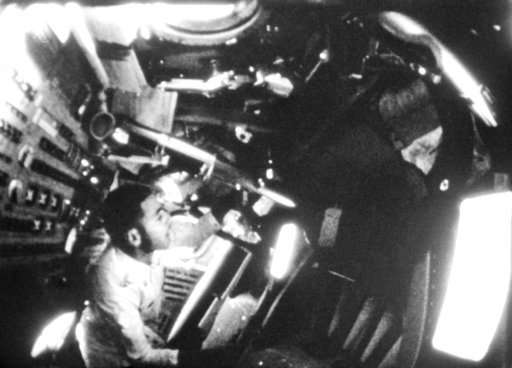
Borman and Anders never flew in space again, and Soviet cosmonauts never made it to the moon.
Lovell went on to command the ill-fated Apollo 13—"but that's another story." That flight was the most demanding, he said, "But Apollo 8 was the one of exploration, the one of repeating the Lewis and Clark expedition ... finding the new Earth."
-
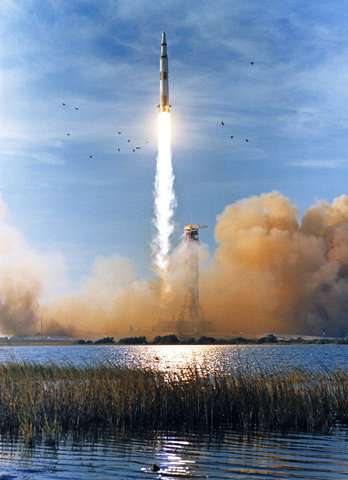
In this Dec. 21, 1968 photo made available by NASA, the Saturn V rocket carrying the Apollo 8 crew launches from the Kennedy Space Center in Florida with 7.5 million pounds of thrust. The vehicle has just cleared the tower at Launch Complex 39A (NASA via AP, File) -
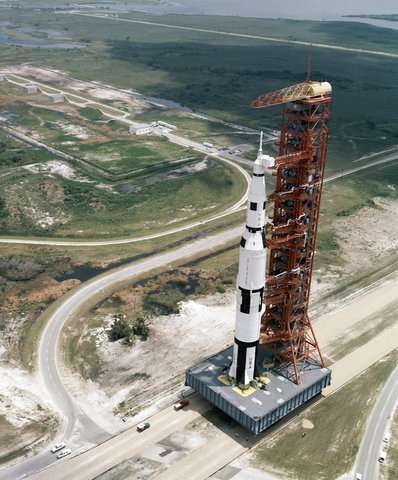
In this December 1968 file photo, the Saturn V rocket carrying the Apollo 8 crew is prepared for launch from the Kennedy Space Center in Florida. (AP Photo/File) -
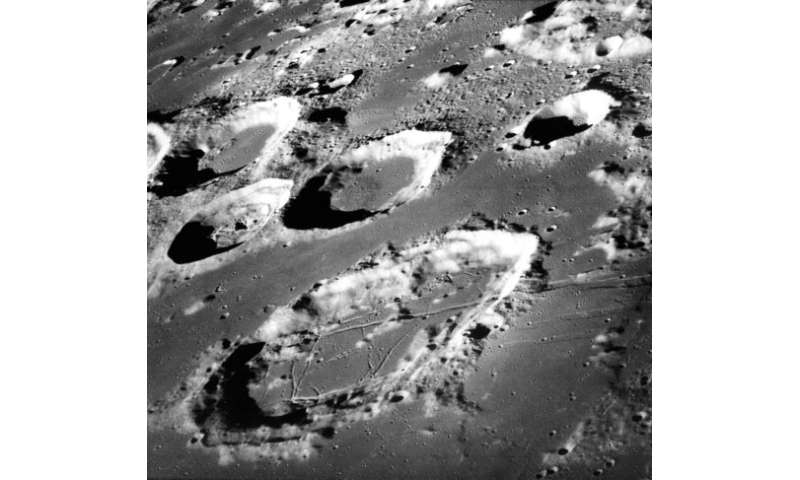
This Dec. 29, 1968 photo made available by NASA shows the large moon crater Goclenius, foreground, approximately 40 statute miles in diameter, and three clustered craters Magelhaens, Magelhaens A, and Colombo A, during the Apollo 8 mission. (NASA via AP, File) -
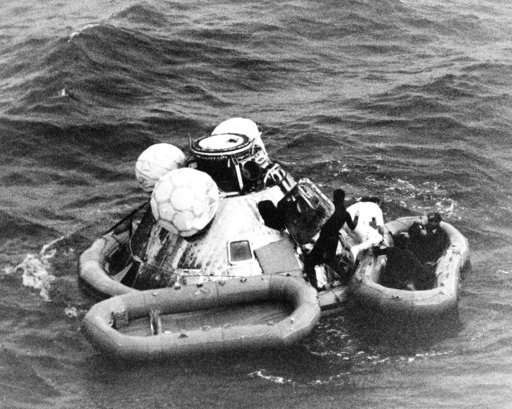
In this Dec. 27, 1968 file photo, divers help recover the Apollo 8 crew from their capsule after splashdown in the Pacific Ocean. (AP Photo/File) -
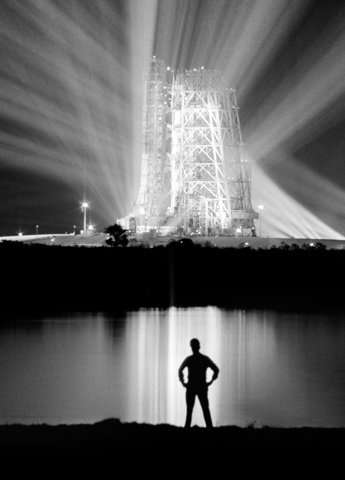
In this Dec. 19, 1968, file photo, spotlights illuminate the 363-foot-tall Saturn V booster rocket on the launch pad at the Kennedy Space Center in Florida, carrying the Apollo 8 spacecraft and its crew of three astronauts. (AP Photo/File)
© 2018 The Associated Press. All rights reserved.




















